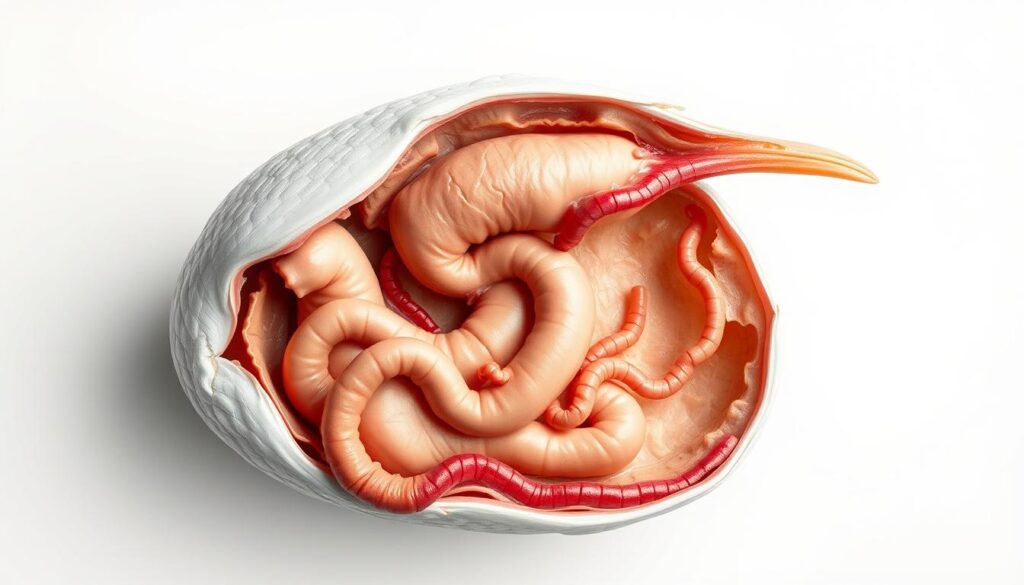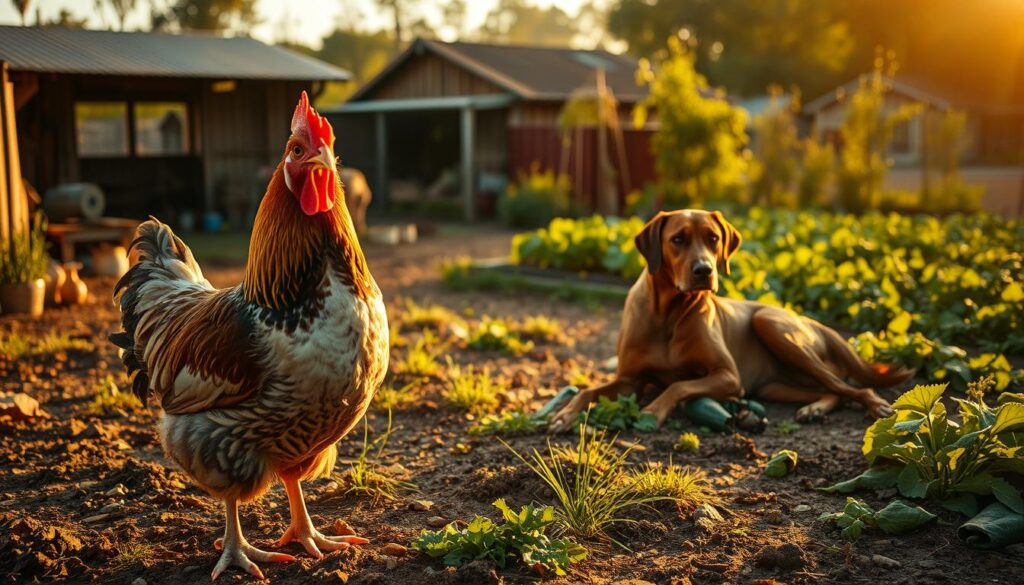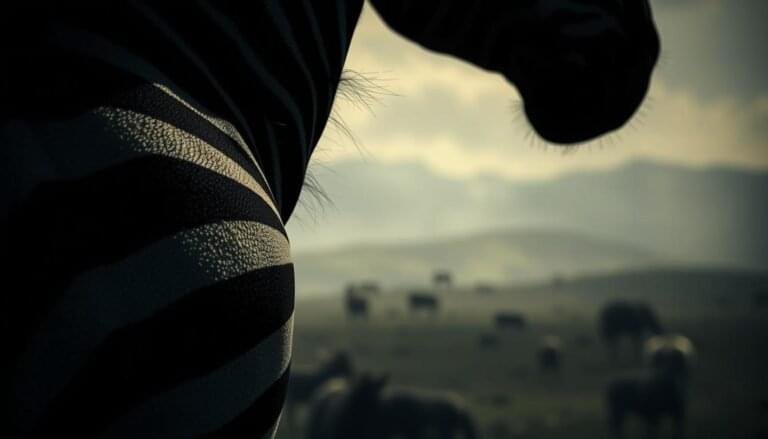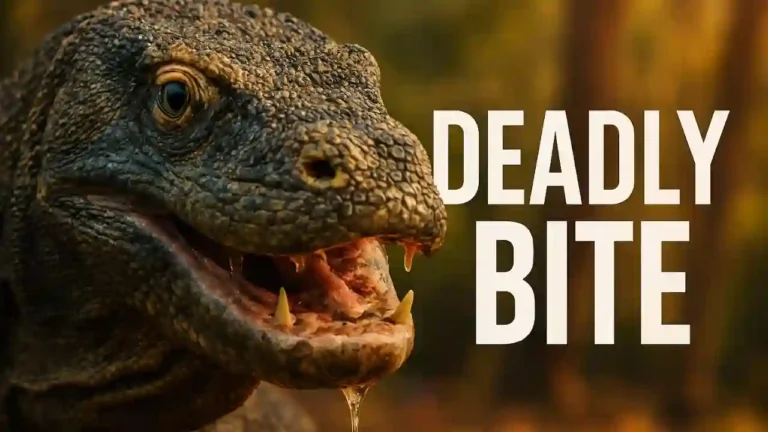Are Birds Mammals?: Did you know that over 300 million years of evolution separate birds and mammals? This vast timespan has led to some fascinating differences between these two classes of warm-blooded animals. As I embarked on my journey to uncover the truth, I discovered that birds belong to the class Aves, while mammals are part of Mammalia. This distinction is more than just a classification—it reflects fundamental differences in their anatomy, physiology, and behavior.
One of the most striking differences lies in their reproductive strategies. Birds typically lay eggs with hard shells, while most mammals give birth to live young and produce milk to nourish them. Even more intriguing is the unique respiratory system of birds, which includes air sacs that allow for continuous airflow, making their oxygen exchange more efficient compared to mammals. These differences are not just superficial; they are rooted in their distinct evolutionary paths that began over 318 million years ago.
As we explore these contrasts in the following sections, we’ll delve into how these differences have shaped the survival and adaptability of both groups. Whether it’s the structure of their skeletons, their methods of thermoregulation, or their unique reproductive strategies, understanding these distinctions will provide a clearer picture of why birds are not classified as mammals.
Key Takeaways
- Birds and mammals are separated by over 300 million years of evolution.
- Birds belong to the class Aves, while mammals belong to Mammalia.
- Birds lay hard-shelled eggs, while most mammals give birth to live young.
- The respiratory system of birds is more efficient due to air sacs.
- Birds and mammals have distinct anatomical and physiological features.
Introduction: My Journey Examining Bird and Mammal Traits
My curiosity about the differences between birds and mammals began when I stumbled upon conflicting information in several articles. This sparked a desire to uncover the truth and clarify these distinctions.
Why I Began This Exploration
I was inspired by the varied perspectives found in top-ranked articles, which highlighted the need for a clear understanding of these two classes. This led me to delve into their unique traits and definitions.
Setting the Context Through Key Definitions
Understanding the basics is crucial. A class is a broader category than an order, which in turn is broader than a species. For instance, birds belong to the class Aves, while mammals are part of Mammalia. These classifications help in distinguishing their characteristics.
A key difference lies in their reproductive strategies. Birds typically lay eggs with hard shells, a trait inherited from their dinosaur ancestors. In contrast, most mammals give birth to live young, with rare exceptions like the platypus, which lays eggs.
My research has been both fascinating and enlightening, covering both anatomical and physiological comparisons. It’s remarkable how these warm-blooded creatures have evolved such distinct features despite sharing a common ancestor over 300 million years ago.
| Characteristic | Birds | Mammals |
|---|---|---|
| Reproduction | Lay eggs | Give birth to live young (mostly) |
| Covering | Feathers | Hair |
| Respiration | Complex air sacs | No air sacs |
This journey has not only clarified my understanding but also deepened my appreciation for the diversity of life on Earth.
Understanding the Basics: What Makes a Bird?
Feathers are the most distinctive feature of birds, setting them apart from all other animals. These remarkable structures are not just for flying; they also provide insulation and protection. But feathers are just one part of what defines a bird.
Birds belong to the class Aves, a group characterized by unique anatomical features. One key difference is their lightweight bones, which are hollow and filled with air sacs. This adaptation makes flight possible by reducing overall weight. Their skeletal system is also highly specialized, with fused bones in the hips and shoulders that provide stability during flight.
| Characteristic | Birds | Difference |
|---|---|---|
| Bones | Lightweight, hollow, and filled with air sacs | Unique to Aves class |
| Feathers | Present on all birds | Primary feature for flight and insulation |
| Beaks | Variety of shapes adapted to diet | No teeth; evolved from dinosaur ancestors |
The shape of a bird’s beak is another defining feature, adapting to its diet and habitat. For example, eagles have sharp, hooked beaks for tearing flesh, while ducks have flat, broad beaks for filtering water. These adaptations highlight the diversity within the Aves class.
Birds also share a common evolutionary history with dinosaurs, with many fossils showing a clear link. The presence of feathers, wishbones, and three-toed limbs are remnants of their ancient lineage. Understanding these traits helps clarify what it means to be a bird, both biologically and taxonomically.
Understanding the Basics: What Makes a Mammal?
Mammals are a fascinating group of animals, each with unique traits that set them apart from other creatures. From the tiny Etruscan shrew to the massive blue whale, these animals share distinct characteristics that define their class.
Mammalian Characteristics and Adaptations
Mammals are primarily recognized by their hair or fur, which provides insulation and protection. Another key feature is the presence of mammary glands, used to produce milk for their young. Most mammals give birth to live young, except for monotremes like the platypus, which lay eggs.
- Hair or Fur: Provides insulation and protection.
- Mammary Glands: Produce milk to nourish young.
- Live Birth: Most mammals deliver live young, except monotremes.
| Characteristic | Details | Examples |
|---|---|---|
| Hair/Fur | Insulates and protects | Humans, bears |
| Mammary Glands | Produce milk | All mammals |
| Live Birth | Give birth to live young | Humans, whales |
These traits have evolved over millions of years, distinguishing mammals from other animals. Understanding these features helps classify and appreciate the diversity within the mammalian class.
Exploring the Core Question: are birds mammals?
Over 300 million years of evolution have created stark differences between these two groups of warm-blooded animals. To answer the question, it’s essential to examine their anatomy, physiology, and behavior.
One key difference lies in their reproductive strategies. Birds typically lay eggs with hard shells, while most mammals give birth to live young and produce milk to nourish them. Even more intriguing is the unique respiratory system of birds, which includes air sacs that allow for continuous airflow, making their oxygen exchange more efficient compared to mammals. These differences are not just superficial; they are rooted in their distinct evolutionary paths that began over 318 million years ago.
- Birds and mammals diverged significantly in evolutionary paths.
- Birds lay hard-shelled eggs, while most mammals give birth to live young.
- Birds have a more efficient respiratory system due to air sacs.
These distinctions highlight why birds and mammals are classified separately, each with unique adaptations that have enabled their survival and success in diverse environments.
Evolution and Divergence: A Timeline of Change
Over 300 million years ago, a significant split occurred in the evolutionary tree of life, leading to the divergence of birds and mammals. This separation laid the foundation for the distinct characteristics we see today in these two groups of warm-blooded animals.
Milestones in Avian Evolution
The journey of birds began during the Jurassic Period, around 150 million years ago. Fossil records show that early birds like Archaeopteryx exhibited traits from both dinosaurs and modern birds. A major milestone was the development of feathers, which initially served as insulating structures before evolving into tools for flight.
Natural selection played a crucial role in shaping these early birds. The evolution of lightweight bones and air-filled cavities in their skeletons allowed for greater mobility and efficiency in flight. These adaptations were essential for survival and set the stage for the diversity of birds we see today.
Key Divergence from Mammalian Lineages
The evolutionary paths of birds and mammals diverged significantly over time. While mammals developed hair and mammary glands, birds focused on perfecting flight. This divergence is evident in their respiratory systems, with birds developing complex air sacs for efficient oxygen exchange—a feature mammals lack.
Genetic studies reveal that the split between avian and mammalian lineages occurred around 318 million years ago. This genetic divergence led to the unique characteristics we associate with each group today. Birds evolved feathers and lightweight skeletons, while mammals developed hair and advanced dental structures.
Understanding this evolutionary timeline helps us appreciate the distinct features of birds and mammals. Their separate paths have led to remarkable adaptations that highlight their unique places in the natural world.
Anatomical Adaptations in Birds for Flight
Flight is one of the most remarkable abilities in the animal kingdom, and birds have evolved extraordinary anatomical adaptations to excel in this realm. These specialized features not only enable birds to soar through the skies but also highlight their unique evolutionary path.
Feathers, Lightweight Bones, and Aerodynamic Bodies
One of the most iconic features of birds is their feathers. Beyond their role in flight, feathers provide insulation and protection. The structure of a bird’s body is also streamlined to reduce air resistance, with hollow bones that are incredibly lightweight. This reduction in weight is crucial for flight efficiency.
- Feathers are not just for flying; they also provide insulation and protection.
- Birds have hollow bones filled with air sacs, making them lighter.
Their skeletal system is highly specialized, with fused bones that provide stability during flight. These adaptations have evolved over millions of years, refining the flight capabilities of birds.
The Role of High Metabolism in Flight
Birds have a high metabolism, which is essential for the energy demands of flight. This fast metabolism ensures they can generate the power needed for sustained flight. Additionally, their respiratory system, complete with air sacs, allows for efficient oxygen intake and distribution throughout their bodies.
- Birds’ high metabolism supports their energy needs for flight.
- Their air sacs enhance oxygen exchange, making their respiratory system more efficient.
These metabolic and respiratory adaptations are vital for maintaining the high energy levels required for flight, setting birds apart from other animals.
Over time, these anatomical adaptations have been refined, allowing birds to dominate the skies. Their unique combination of lightweight bones, efficient respiratory systems, and high metabolism makes flight not just possible but effortless for many species.
Anatomical Adaptations in Mammals
Mammals have evolved remarkable adaptations that set them apart from other vertebrates. These unique features are central to their survival and reproductive success.
Unique Features: Hair and Mammary Glands
The most distinctive features of mammals are their hair and mammary glands. Hair provides insulation and protection, while mammary glands produce milk to nourish young. These traits are essential for mammalian survival and are not found in birds.
| Feature | Details | Function |
|---|---|---|
| Hair/Fur | Provides insulation and protection | Regulates body temperature |
| Mammary Glands | Produce milk for young | Nutrition and nurturing |
| Structural Differences | Dense bones and specific jaw structures | Support and feeding efficiency |
These adaptations contribute to the overall success of mammals, enabling them to thrive in diverse environments.
Comparing Digestive Systems: Crops, Gizzards, and Mammalian Stomachs

The digestive systems of birds and mammals are as distinct as their evolutionary paths. Birds have evolved unique structures like the crop and gizzard, while mammals rely on compartmentalized stomachs. These differences reflect their dietary needs and energy management strategies.
Fermentation and Nutrient Absorption in Birds
Birds possess a two-chambered stomach: the proventriculus and the gizzard. The proventriculus secretes enzymes to break down food, while the gizzard grinds it with the help of grit. This system is efficient for processing seeds, insects, and fruits quickly, which is crucial for their high metabolism and flight energy needs.
Birds also use a crop to store food before digestion, allowing them to eat continuously and digest later. This adaptation is particularly useful for species that need to eat quickly and then fly for long periods. The fermentation process in birds is less complex than in mammals, focusing on rapid nutrient absorption to support their active lifestyle.
Mammalian Digestive Adaptations
Mammals, especially ruminants like cows, have a multi-chambered stomach designed for breaking down tough plant material. Their stomachs include the rumen, reticulum, omasum, and abomasum, each with specific roles in fermentation and digestion. This complex system allows mammals to extract nutrients from cellulose in plant cell walls, which is difficult for many animals to digest.
The fermentation process in mammals produces gases that must be expelled, but it also generates energy-rich compounds that support their metabolic needs. This adaptation is particularly beneficial for herbivorous mammals, enabling them to thrive on diets rich in fiber.
While both birds and mammals have evolved unique digestive systems, they share a common goal: efficient energy management. Birds prioritize quick digestion to fuel flight, while mammals focus on extracting nutrients from plant material through fermentation. These similarities and differences highlight the remarkable diversity of digestive strategies in the animal kingdom.
Understanding Respiratory and Circulatory Systems’ Differences
The respiratory and circulatory systems of vertebrates reveal fascinating adaptations tied to their environments and energy needs. In the animal kingdom, these systems are crucial for survival, with each species developing unique mechanisms to manage oxygen and blood flow efficiently.
Birds’ Lungs and Complex Air Sacs
Birds possess a highly specialized respiratory system designed to meet the high oxygen demands of flight. Their lungs are smaller but more efficient, working in tandem with a network of air sacs that store and circulate air. This system allows for continuous airflow, unlike the tidal flow seen in mammals, making their oxygen exchange more efficient. For example, during flight, blood flow in birds is optimized to deliver oxygen quickly to muscles, supporting their high metabolic rates.
| Feature | Birds | Mammals |
|---|---|---|
| Respiratory System | Complex air sacs for continuous airflow | Lungs with alveoli for gas exchange |
| Blood Flow | High velocity to support flight | Adapted for varying activity levels |
| Oxygen Efficiency | Up to 15% more efficient | Less efficient compared to birds |
These physiological differences are vital for survival, enabling birds to thrive in environments where oxygen demands are high. The efficiency of their respiratory system is a testament to evolutionary adaptation, ensuring they can meet the rigorous demands of flight and other high-energy activities.
Immune System Insights: Bursa Fabricius vs. Lymph Nodes
The immune systems of birds and mammals have evolved unique strategies to combat pathogens, with distinct lymphoid organs playing crucial roles. In birds, the Bursa Fabricius is central to immune function, while mammals rely on lymph nodes.
What the Bursa Fabricius Teaches Us
The Bursa Fabricius is essential for B-cell development in birds, functioning similarly to bone marrow in mammals. It begins developing around embryonic day 8-10 and reaches peak size 1-2 weeks post-hatch. This organ is vital for producing immunoglobulins, with IgM appearing as early as day 3 post-hatch, followed by IgY and IgA.
- Produces B-cells crucial for humoral immunity.
- Reaches maximum size 1-2 weeks after hatching.
Mammalian Lymph System Compared
In mammals, lymph nodes are key sites for B-cell activation and antibody production. Unlike the Bursa Fabricius, which shrinks with age, lymph nodes remain active throughout life, adapting to various pathogens.
- Lymph nodes facilitate both B-cell and T-cell interactions.
- Remain functional indefinitely, enhancing immune adaptability.
These differences significantly impact disease resistance and overall physiology, showcasing divergent evolutionary paths. The Bursa Fabricius exemplifies avian-specific immune adaptations, while mammalian lymph nodes highlight their complex immune regulation. Understanding these systems provides insights into their unique strategies for combating infections.
Life Strategies: Reproduction and Growth in Birds and Mammals
The reproductive strategies of birds and mammals offer fascinating insights into their evolutionary paths. These strategies have been shaped by millions of years of adaptation to their environments, leading to distinct methods of reproduction and growth.
Egg-Laying vs. Live Birth
Birds and mammals exhibit fundamentally different reproductive strategies. Birds typically lay eggs, while most mammals give birth to live young. These methods have distinct advantages and limitations, reflecting their evolutionary histories.
Egg-laying, or oviparity, allows birds to incubate their young outside their bodies. This method is efficient for species that need to manage energy resources carefully. However, it also means that the developing embryo is more vulnerable to environmental factors. In contrast, mammals nurture their young internally, providing a protective environment and nourishment through the placenta. This method, known as viviparity, offers greater control over developmental conditions but requires significant maternal resources.
| Reproductive Strategy | Birds | Mammals |
|---|---|---|
| Method | Lay eggs | Give birth to live young |
| Advantages | Energy efficiency, external incubation | Protected development, internal nourishment |
| Limitations | Vulnerability to environmental factors | High maternal resource investment |
These reproductive strategies have profound implications for growth rates and developmental strategies. Birds often prioritize rapid growth to survive, while mammals focus on prolonged development and nurturing. The physiological processes underlying these strategies, such as egg incubation and gestation, highlight the unique adaptations of each group.
Selective pressures have played a crucial role in shaping these reproductive strategies. Birds evolved egg-laying to adapt to their environments and energy needs, while mammals developed viviparity to provide better protection and nourishment to their young. These strategies reflect the broader themes of evolutionary adaptation, where species develop traits that enhance their survival and reproductive success.
In conclusion, the reproductive strategies of birds and mammals are a testament to their unique evolutionary paths. Understanding these differences provides valuable insights into the biology and diversity of life on Earth.
Domestication and Its Impact on Physiology

Domestication has profoundly shaped the physiological and genetic makeup of both birds and mammals, offering a unique glimpse into human influence on evolution. This process has led to remarkable changes in various traits, from growth rates to brain development.
Selective Breeding and Genetic Shifts
Selective breeding has been a cornerstone of domestication, particularly evident in poultry. Farmers have focused on enhancing growth rates, altering stress physiology, and modifying morphological features to meet human needs. These changes reflect significant genetic shifts that differentiate domesticated species from their wild counterparts.
| Characteristic | Domesticated Traits | Wild Traits |
|---|---|---|
| Brain Development | Smaller brain size, reduced neural crest input | Larger brain size, complex neural structures |
| Growth Rate | Accelerated growth, higher metabolic rates | Slower growth, adaptive to natural environments |
| Morphological Features | Altered beak shapes, feather variations | Natural beak shapes, typical feather patterns |
Research highlights that domestication has led to a four-fold increase in growth rates in meat-type chickens. Additionally, studies show that domesticated birds exhibit a 3.54-fold increase in relative heart weight compared to mammals, showcasing physiological adaptations for high-energy needs.
- Selective breeding has modified traits like stress physiology and parental care in domesticated birds.
- Domestication has influenced brain development, with domesticated species often showing reduced brain sizes.
- Genetic shifts are evident in morphological features, such as beak shape and feather structure.
These physiological and genetic changes underscore the dynamic interplay between genetics and environmental selection. Domestication serves as a prime example of how human intervention can drive evolutionary changes, resulting in species tailored to specific needs and environments.
A Closer Look at Bone Structures and Special Features
The skeletal systems of birds and mammals reveal fascinating evolutionary adaptations. These differences are crucial for understanding their unique survival strategies and functional outcomes.
Differences in Jaw Articulation and Skeletons
Mammals feature a dentary-squamosal jaw joint, which provides strong support for chewing various foods. This adaptation is linked to diverse diets, including plants and meat. In contrast, birds have lightweight skeletons essential for flight, with hollow bones and air-filled cavities that reduce overall weight.
| Feature | Birds | Mammals |
|---|---|---|
| Jaw Articulation | Lightweight, adapted for specific diets | Dentary-squamosal joint for chewing |
| Bone Structure | Hollow bones with air sacs | Dense, solid bones |
| Function | Supports flight and efficiency | Supports chewing and durability |
These skeletal adaptations highlight how each group has evolved to thrive in their environments. Birds’ lightweight bones enable flight, while mammals’ robust structures support varied diets and activities.
Analyzing Behavioral and Metabolic Differences
Both birds and mammals are endothermic, meaning they regulate their own body temperature internally. However, their metabolic strategies differ significantly due to their unique life histories and reproductive strategies.
Warm-Blooded Mechanisms and Energy Requirements
Birds have high metabolic rates, which support their energy-intensive activities like flight. Their respiratory systems, equipped with air sacs, allow for efficient oxygen exchange. Mammals, while also warm-blooded, exhibit varying metabolic rates adapted to their specific environments and activities. For instance, smaller mammals often have higher metabolic rates to maintain body temperature, while larger ones may conserve energy through hibernation or torpor.
Energy expenditure differs notably between the two groups. Birds allocate substantial energy to flight, necessitating a constant food supply. In contrast, mammals direct energy toward maintaining a stable body temperature and producing milk for their young. For example, migratory birds like hummingbirds require frequent feeding to sustain their flight, while mammals like bears may hibernate to conserve energy during food scarcity.
These metabolic differences influence daily behaviors and long-term survival strategies. Birds prioritize rapid energy acquisition, often through constant foraging, while mammals balance energy use with reproductive needs, such as nurturing offspring. Understanding these distinctions provides insights into how each group has evolved to thrive in diverse environments.
Reflections on Evolutionary Relationships and Classification
The evolutionary journey of life on Earth is a tapestry woven over millions of years, with each thread representing a species and its ancestors. Recent advancements in DNA analysis have revolutionized how we understand these relationships, particularly between birds, reptiles, and mammals.
Animal Classification Systems Explored
Traditionally, classification relied on physical traits, but DNA analysis now offers a clearer view of ancestry. For instance, studies show that birds share a closer evolutionary bond with reptiles than with mammals, tracing back over 300 million years. This insight reshapes how we categorize species, emphasizing genetic lineage over physical appearance.
The Role of DNA Analysis in Tracing Ancestry
DNA has become a powerful tool in mapping evolutionary paths. By examining genetic material, scientists can uncover how species diverged and evolved. This molecular approach complements traditional methods, providing a more accurate understanding of biological relationships.
Understanding these ancestral ties helps explain modern anatomical differences. For example, the structure of a bird’s wing mirrors the forelimbs of certain reptiles, highlighting a shared heritage.
Looking ahead, continued DNA research promises even deeper insights into life’s evolutionary tree. These discoveries will not only enhance our knowledge of species origins but also guide future biological studies.
Conclusion
After exploring the fascinating worlds of birds and mammals, it’s clear that these two groups of warm-blooded animals have distinct evolutionary paths. Scientific evidence shows that birds and mammals diverged over 300 million years ago, leading to unique traits in each group. Birds are characterized by feathers, lightweight bones, and a specialized respiratory system with air sacs, while mammals are known for their hair, mammary glands, and the ability to give birth to live young.
Throughout this journey, I’ve uncovered how these differences in anatomy, physiology, and behavior set birds and mammals apart. Birds lay eggs, while most mammals deliver live young, a key distinction shaped by their evolutionary histories. The ability of mammals to produce milk for their young is a hallmark feature, whereas birds rely on egg incubation. These reproductive strategies highlight their unique adaptations to their environments.
Reflecting on this exploration, I’ve gained a deeper appreciation for the diversity of life on Earth. Understanding these differences isn’t just about classification; it’s about seeing how life has adapted in remarkable ways. Science’s ability to clarify complex questions reminds us of the beauty in knowledge and discovery. In the end, both birds and mammals teach us about resilience, adaptability, and the intricate web of life.







